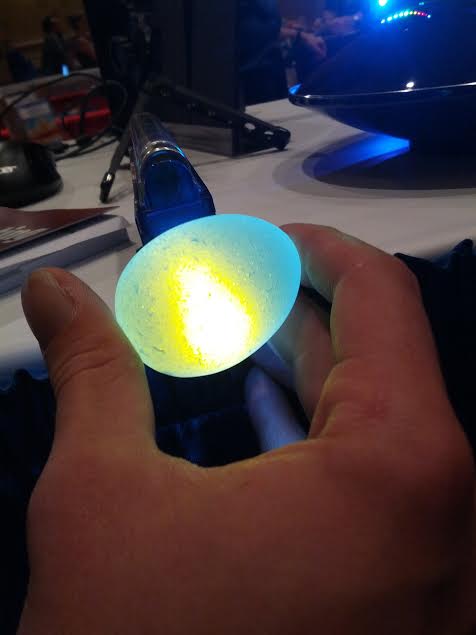The "Sunset Egg": Tyndall Scattering

August 5, 2015
Without a bright light shining on it, this glass egg appears almost colorless. While the glass was still molten, fine particles were stirred in, each no more than a few hundred nanometers in diameter. Because they're not much larger than the wavelength of visible light, they scatter shorter wavelengths more easily than longer ones, giving it an intense and ethereal blue color when a white light is shined upon it; this is known as the Tyndall Effect, and it's the same effect responsible for blue smoke and blue eyes. As a result of the preferential high-energy scattering, looking at the light source through the egg reveals longer wavelengths.














